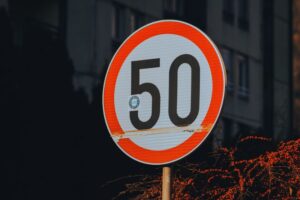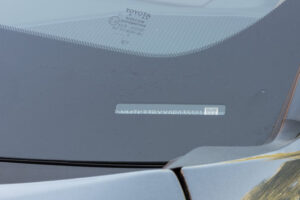Road signs help keep everyone safe on the road. In the United States, they are standardized by federal regulations and provide information about what you can and can’t do. So, what does a “No Outlet” sign mean?
A “No Outlet” sign is used at the entry to a road network when there is only one exit from a small neighborhood made up of multiple streets onto an arterial street. This makes it different from a “Dead End” sign. You place a “Dead End” sign at the beginning of a single street when it comes to a dead end or cul-de-sac.
Read on to learn more about a No Out sign and how it differs from a Dead End sign.
No Outlet Sign Meaning
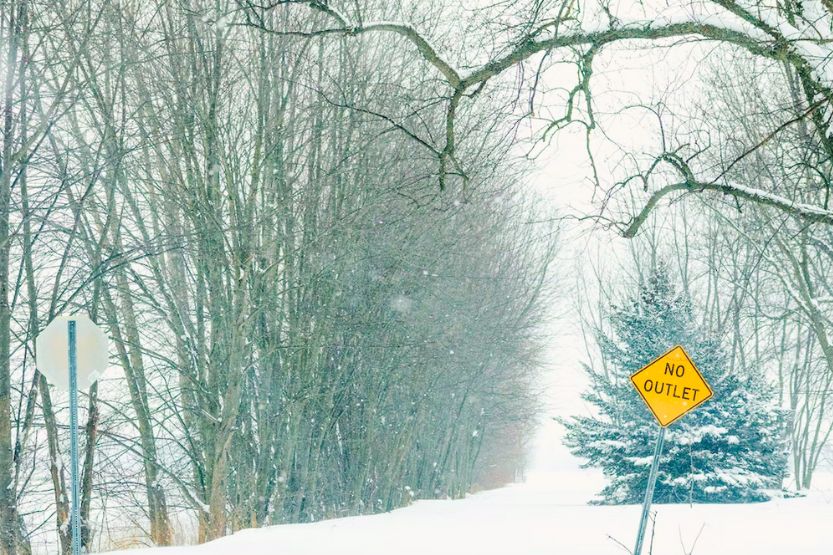
No outlet refers to a road network entrance from which no other way exists. Although there are other roads, it isn’t a dead end because there isn’t another way to access the main street. The ideal location for a no outlet sign is in a small neighborhood with only one entrance and exit.
According to the regulations of the FHA, a road or street that ends in a dead end or cul-de-sac may have a “Dead End” sign placed at the road entry. If there is no other exit from a route or road network, the No Outlet sign may be placed there.”
There are more than 160 No Outlet signs in New York City alone.
No Outlet vs. Dead End Sign
A Dead End Has Only One Inlet or Outflow
A street having only one inlet or outflow is referred to as a dead end or cul-de-sac.
Although “dead end” is understood in all English dialects, many more terms are used in official terminology and traffic signs.
What Does Cul-de-sac Mean?
You may find a few of these used exclusively locally. Cul-de-sac, for instance, refers to dead ends with a circular lot, allowing for simple turning at the end of the road, and is often not an exact synonym for dead end in the United States and other countries, such as Canada and Australia.
New York City Has More Than 160 No Outlet Signs
There are more than 160 “No Outlet” signs and 4,659 “Dead End” signs in New York City alone. In California, streets or road networks that end in cul-de-sacs have the designation “Not a Through Street.”
Some signs have also displayed No Outlet, for example, Meyers Avenue south of Eureka Street in the Pine Hills area.
Dead End Sign Aims to Reduce Residential Traffic
The Dead End sign’s primary goal is to reduce residential traffic. While some dead ends only enable cars to enter and exit through the road entrance, others permit bicycles, pedestrians, or other non-automotive traffic to cross through connected trails.
According to the International Federation of Pedestrians, you should call such roadways “living end streets.” Moreover, they should have signs at the street’s entrance stating it is open to pedestrians and bikes.
Its implementation maintains the dead end’s fundamental role as a non-through road while establishing full network connectivity for pedestrians and cyclists.
No Outlet Sign Short History
No Outlet and Dead End signs have been widely used in new subdivisions in the United States, Canada, England, and other countries since the end of World War II. The development of Dead End typically has one or more primary roads.
Several shorter and longer cul-de-sac streets branch out of the primary roads. Then, they all come together to fill the available space in a hierarchical structure.
In the United States, Canada, and Australia, the design has been the predominant road network arrangement of suburbs and exurbs since the 1960s.
In addition, it is gaining popularity in China, Western Europe, and Latin America. Few roads leave the neighborhood in such a layout and go into other major roads.
The emphasis on a grid plan in American urban planning during the 19th and early 20th centuries was primarily due to the country’s heavy reliance on foot, horse, and tram transit. Alleys were there in earlier urban developments to enable the delivery of home supplies, such as coal.
Cul-de-sacs minimize the amount of vehicular traffic on the subdivision’s residential streets. This, in turn, lowers noise levels, air pollution, and the risk of accidents. Moreover, cul-de-sac street networks appear to have a significantly low collision rate.
How Do Road Network Patterns Impact Society
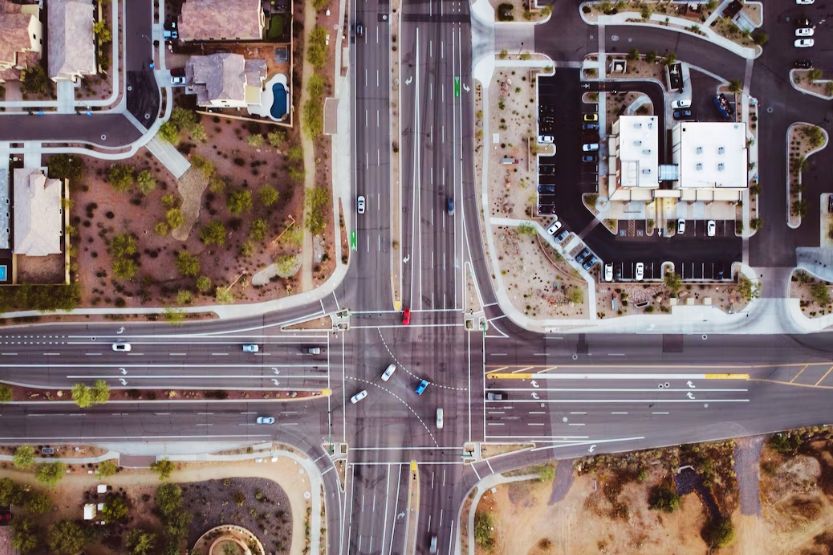
High Incidence of Crashes in Four-Way Intersections
Network patterns have a significant impact on traffic safety.
For instance, four-way intersections, uncommon in a network with “cul-de-sac or No Outlet” streets, dramatically increase total and injury crashes, even though all intersection types generally increase the incidence of fatal crashes.
Furthermore, the decrease in traffic will reduce crime and boost desirability. Increased natural surveillance and a sense of ownership are two ways of building security in a neighborhood. This naturally happens on Dead End streets.
Children Feel Safer on Cul-de-sac Streets Than in Open Grid Street Patters
Children are likelier to play outdoors on cul-de-sac streets than in open grid street patterns. This is because kids find them safer, with less perceived danger from driving.
Even more so, the level of social interaction is highest on Dead End streets with the least traffic.
Real Estate Developers Also Prefer Dead Ends
Interestingly enough, real estate developers also prefer Dead Ends because they make it easier to build close to property lines, waterways, and irregularly shaped pieces of land and allow for the construction of more homes.
Dead End Streets Offer More Flexibility Than Conventional Grid
Dead End streets offer more flexibility than the conventional grid in adjusting to a site’s natural slopes and environmentally sensitive elements, such as streams, creeks, and mature forest development.
The fact that buyers often pay up to a 20% premium for a home on such a street, as per one study, suggests that people prefer Dead End streets. That might be because there is far less passing traffic, which causes less noise and less real or perceived risk.
No Outlet and Dead End Signs Are Used in Gated Communities
Above all, No Outlet and Dead End signs are used in gated communities to lessen the requirement for controlled entry and departure points by reducing the number of “through roads.”
Again, what does it mean when a sign says no outlet? You’ll see a No Outlet sign at the entrance of a neighborhood composed of several streets from which there’s no other exit or entrance.
Effects of No Outlet Signs
Affect the Environment Due to the Use of Vehicles Even for Short Distances
Urban planners usually criticize the No Outlet and Dead End signs for promoting vehicle use even for small distances since they prevent more direct connections and force drivers to go long distances, even to close sites.
Thanks to the decrease in walking and cycling rates, this raises fuel consumption and vehicle emissions.
Decrease the Walking and Cycling Rates
Hence, it has a detrimental impact on health. According to research by Richard Jackson, residents of localities with a high concentration of Dead Ends, for instance, are 6 pounds (2.7 kg) heavier than residents of conventional towns with open grid networks.
The research also makes it difficult to pinpoint precisely which aspects of the built environment are most strongly linked to behavior about physical activity. The study also stresses that you should not confuse obesity with insufficient physical exercise. Obesity is usually the result of energy imbalance.
Possible to Convert No Outlet Roads
On the other hand, due to public ownership of the street right-of-way, it is physically and administratively simple to convert existing roadways that are a part of a grid design into linked Dead Ends, as was the case in Berkeley, California, and Vancouver, British Columbia.
Residents in nearby areas, however, can object to the possible increase in traffic and delay the process.
What Are the Disadvantages of a Dead End Sign?
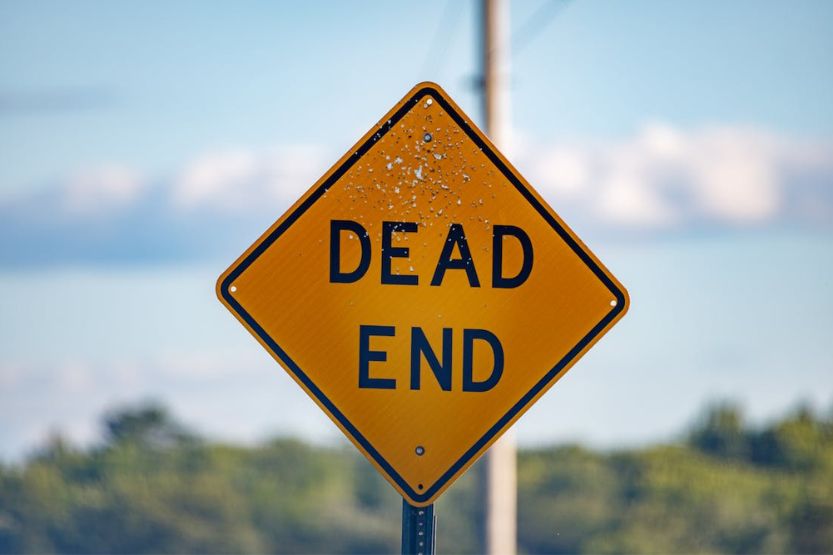
Reduces the Amount of “Through Traffic”
Dead Ends have also received some criticism for hurting safety. This is because they reduce the amount of “through traffic” (vehicular or pedestrian), which may notice an accident or crime victim to need assistance.
Gated Community Wants Dead-End Sign for Safety
This is especially true of those that limit pedestrian routes in addition to road traffic routes. Dead End and gated community proponents have responded that by reducing “through traffic,” you can easily spot any “outsider” in the enclosed local context. So this poses less of a threat.
Then, you would think of such a viewpoint as unrealistic too. After all, one would argue that increasing traffic should actually boost safety and not the other way around.
New Urbanism Movement Has Criticized Dead-End Layouts
Even more broadly, the New Urbanism movement has criticized Dead End layouts for the inability to network with one another. Such roadway designs may enhance traffic on the collector streets.
Cul-de-sacs and looping streets can naturally exclude car traffic from them and limit access only to residents. Minor residential collectors and arterials that connect neighborhoods and districts receive the most resident traffic.
Conventional vs. Hierarchical Structure
Conventional layouts, which are non-hierarchical, typically exhibit lower peak speeds and shorter, more frequent intersection delays than hierarchical patterns.
While the hierarchical structure is better for lengthy travels, the traditional form is better for short trips. Due to its hierarchical nature, local trips take less time but cover fewer distances.
Plus, a refined hierarchical network can enhance traffic performance.
Emergency Services Find It Challenging to Locate Streets in Communities
Emergency services often find it challenging to locate streets in communities with several Dead End streets with similar names. They also find it challenging to turn around in such a street for large fire response vehicles.
Children Who Live in Cul-de-sacs Often Have to Walk to a Bus Stop
Moreover, children who live in cul-de-sacs often have to walk to a bus stop on a major thoroughfare because school buses can sometimes have trouble turning around. However, this may be good because it allows kids to engage in everyday physical activity.
A few US cities, such as Austin, Texas; Charlotte, North Carolina; and Portland, Oregon, have restricted and regulated the inclusion of Dead End roadways in new suburbs after weighing their pros and cons.
Less Walkable Cul-de-sac Neighborhoods
Cul-de-sac neighborhoods are less walkable than those with street grids. They do, however, have a countervailing public benefit. They often see less motor traffic as they are so challenging to get to.
Cities aiming to optimize walkability should not favor Dead Ends over grids, given the public policy interests on both sides. But, they should still permit some cul-de-sacs as a legal residential alternative.
In addition, there are “middle ground” options between banning and requiring cul-de-sacs. A city might, for instance, promote cul-de-sacs along with pedestrian paths.
Traffic Safety Issues
Although studies have shown that neighborhoods with multiple Dead Ends have a higher incidence of traffic accidents involving young children, Dead End, and No Outlet signs are still a safe option for children.
Many factors contribute to this elevated risk of traffic accidents, such as:
- Families on Dead End streets travel further to get where they need to go,
- Lack of public awareness on how to be cautious of traffic.
FAQs
What Is the Difference Between “No Outlet” and “Dead End” Signs?
A dead end is a street that terminates with no other roads linking to it. If you turn onto a dead-end street, you will remain there to the end. You’ll eventually have to return and exit the same way you entered.
A street with “no outlet” does link to neighboring streets, but all paths ultimately end in a dead end. You will eventually need to leave in the same way that you entered.
Is There a Difference Between “No Outlet” and “Do Not Enter” Signs?
Yes. A sign that reads “Do not enter” means that the two-way street has changed to a one-way street. So, you ultimately have to turn.
No Outlet means the street may connect to one or more other streets. But, each of them is a dead end. So, you will have to leave the same way you entered. Dead ends don’t have any connected streets. They just come to an end.
Conclusion – What Does a No Outlet Sign Mean?
A No Outlet sign refers to a road network entrance with no alternate exit. Even though there are other roads, there is only one way to get to the main street.
Therefore, you should not confuse it with a Dead End sign. You place a Dead End sign at the beginning of a single street or road to alert drivers that the path they are on leads to a dead end or cul-de-sac.
The signs “No Outlet” and “Dead End” have been regularly used throughout the United States, Canada, England, and other countries.
Urban planners often criticize them for encouraging the use of vehicles, even for short distances. This is because they block more direct connections and force drivers to travel long distances to reach close sites.
Read next:

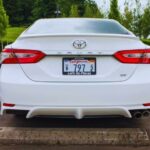

![DRL Warning Light [What Does It Mean, Causes, and How to Fix] what does the drl warning light mean](https://roadsumo.com/wp-content/uploads/2022/04/what-does-the-drl-warning-light-mean-150x150.jpg)


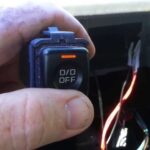
![Read more about the article Is Bumper a Safe App? [Bumper Review]](https://roadsumo.com/wp-content/uploads/2024/02/Is-Bumper-a-safe-app-1-300x200.png)
